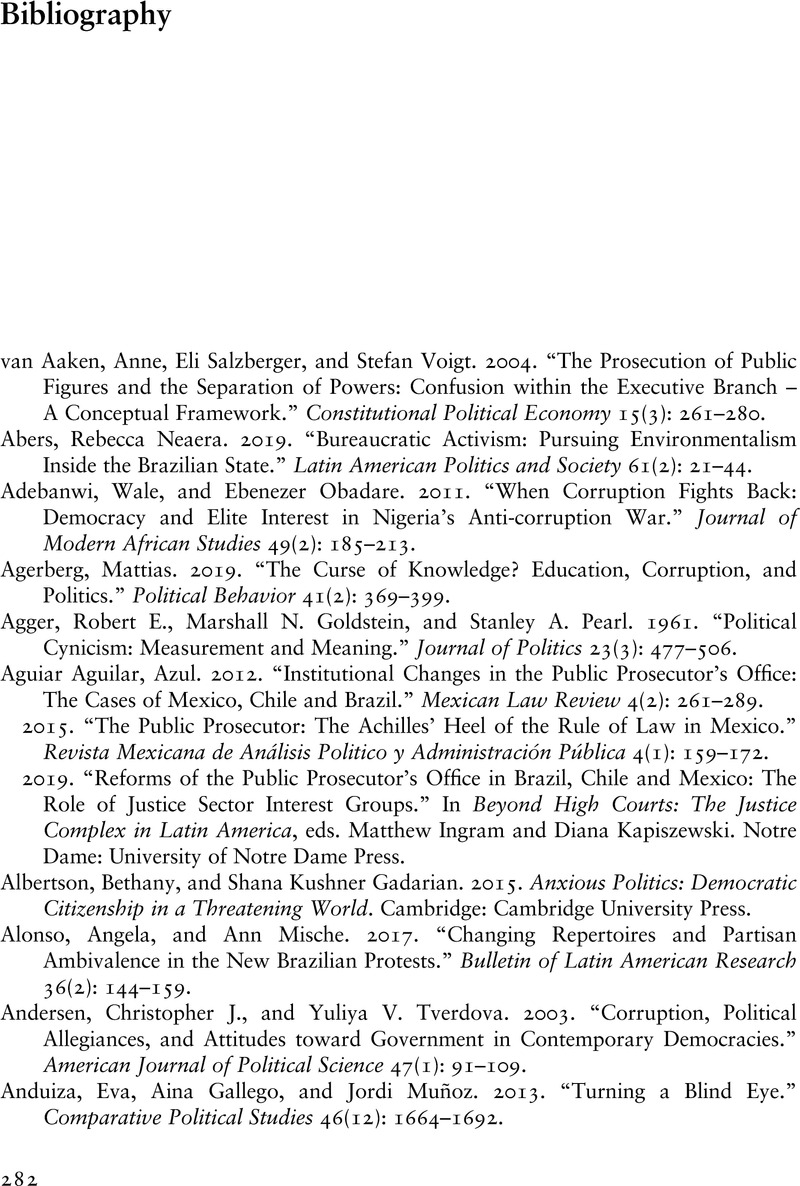Book contents
- Prosecutors, Voters, and the Criminalisation of Corruption in Latin America
- Cambridge Studies in Law and Society
- Prosecutors, Voters, and the Criminalisation of Corruption in Latin America
- Copyright page
- Contents
- Figures
- Tables
- Acknowledgements
- 1 Introduction
- Part I Causes
- Part II Public Reactions
- Part III Conclusions
- Bibliography
- Index
- Cambridge Studies in Law and Society
- References
Bibliography
Published online by Cambridge University Press: 05 April 2023
- Prosecutors, Voters, and the Criminalisation of Corruption in Latin America
- Cambridge Studies in Law and Society
- Prosecutors, Voters, and the Criminalisation of Corruption in Latin America
- Copyright page
- Contents
- Figures
- Tables
- Acknowledgements
- 1 Introduction
- Part I Causes
- Part II Public Reactions
- Part III Conclusions
- Bibliography
- Index
- Cambridge Studies in Law and Society
- References
Summary

- Type
- Chapter
- Information
- Prosecutors, Voters, and the Criminalization of Corruption in Latin AmericaThe Case of Lava Jato, pp. 282 - 299Publisher: Cambridge University PressPrint publication year: 2023

